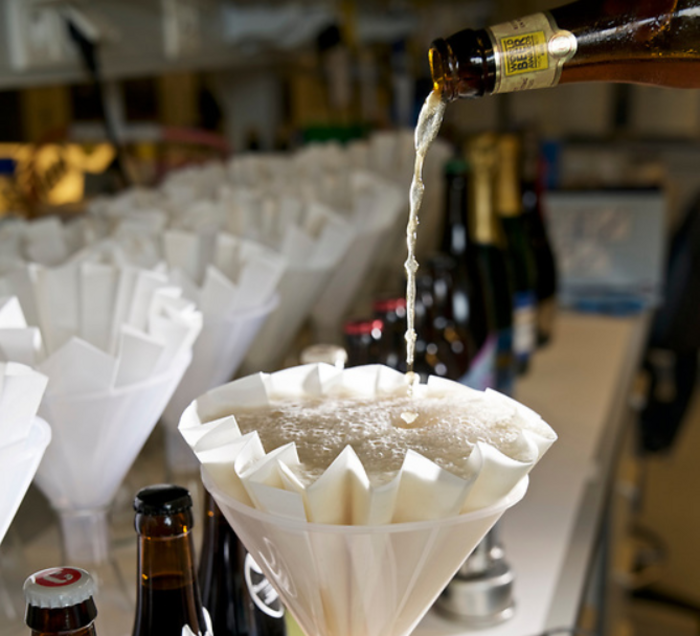Enlarge image
Beer bottle from 1885: A slim, elegant, harmonious beer, according to the tasters
Photo: - / dpa
When Wilhelm I was still German Emperor, a beer was bottled that researchers have now tried.
The verdict on the almost 140-year-old beer is positive - four certified tasters tried the historic drink for a project at the Technical University of Munich (TUM).
They tasted aromas of sherry, port and plums, among other things.
"It was very harmonious in the overall impression and in the bitterness," explained Martin Zarnkow, head of technology and development at the Weihenstephan research center for brewing and food quality, in a statement.
"Overall, it's a very lean, elegant, harmonious beer that still smells and tastes really great." The study was published in the journal Scientific Reports.
According to the university, the bottle that was filled in 1885 was kept in northern Germany and found in a commercial building during clean-up work.
It therefore comes from the private brewery Barre, a brewery in Lübbecke in the Minden-Lübbecke district in North Rhine-Westphalia.
The beer was consistently stored at room temperature and sealed with cork, wire and wax.
Comparable to industrially brewed beer
However, the scientists were not only concerned with the taste of the beer from the imperial era in their investigation.
They also analyzed the molecular profile of the beer at the Chair of Analytical Food Chemistry.
The individual production steps of malting and brewing, such as wort preparation, fermentation, filtration and storage, leave traceable molecular imprints.
The investigation showed that the signature of the historic beer is comparable to modern, industrially brewed beers, apart from a strong oxidation of the hop components.
After comparing the chemical signature with that of 400 modern, national and international beers, the researchers classified the sample as a typical pale lager.
The comparison "created a database that now makes it possible to understand the technology behind a product.
Something we've been doing for a long time, but so far we haven't been able to put it on such a statistically solid basis," Zarnkow continued.
The investigation of the historical beer enables the scientists to draw conclusions about the brewing methods of the time.
They found out, for example, that the beer was brewed using a bottom-fermenting process and was later filtered.
Another interesting discovery: The beer complied with the Purity Law - although that was not mandatory in the region at the time.
"But it was brewed according to the Purity Law and fully corresponded to the characteristics published at the time - apart from the color," said Zarnkow.
The Purity Law comes from Bavaria, in 1516 it was enacted in Ingolstadt as a state regulation.
It stipulated that beer could only consist of water, malt and hops, later adding yeast as an ingredient.
ani/dpa














